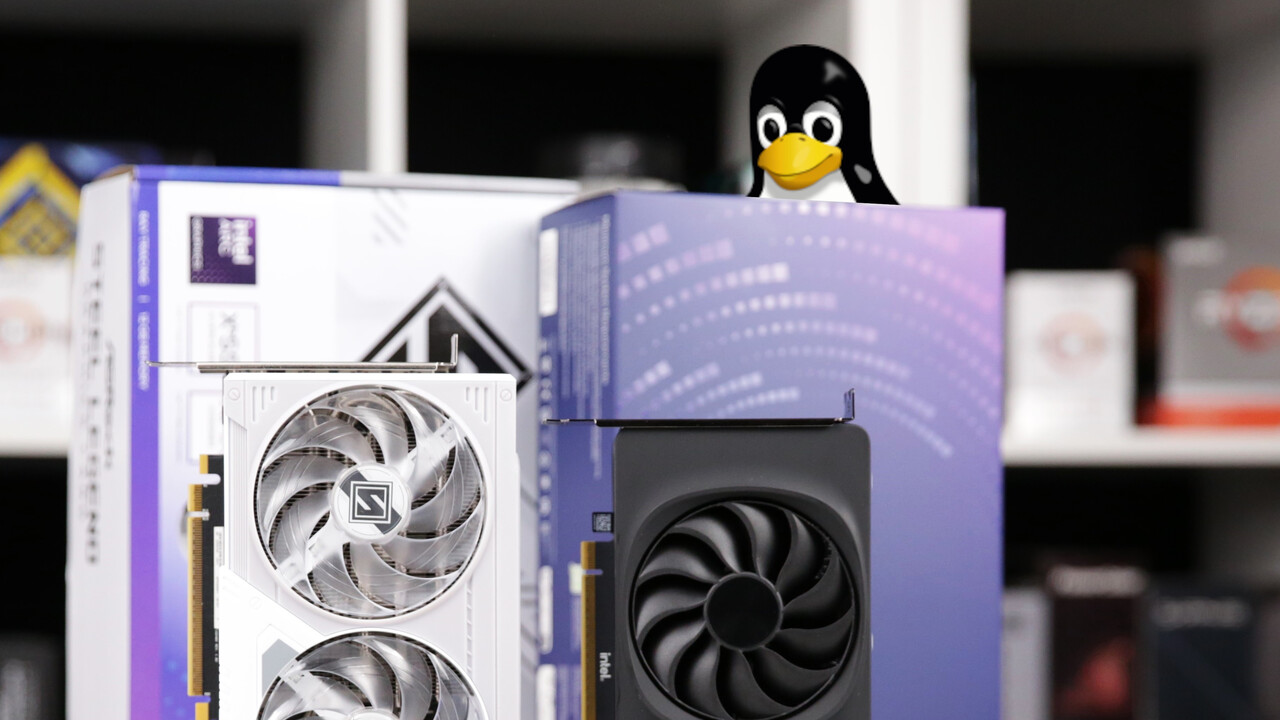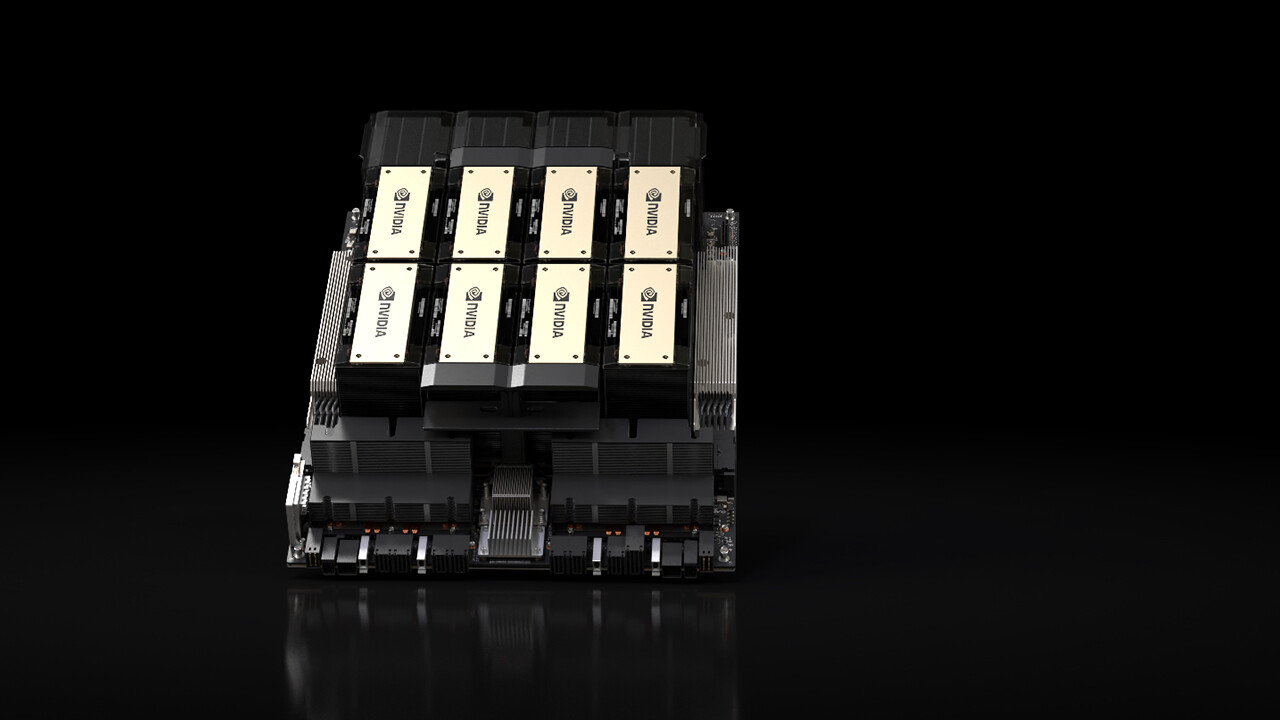New GeForce rumors: Nvidia plans two RTX 5060 with 8 GB to 12 GB VRAM 109 comments

According to new rumors that have not yet been confirmed or confirmed, Nvidia is planning the GeForce RTX 5060 in two variants with 8 GB and 12 GB of graphics memory – GDDR7 makes this possible. The GeForce RTX 5060 Ti, on the other hand, is expected to be based on the larger GeForce RTX 5070 chip. A healthy dose of skepticism is in order.
The GeForce RTX 5090 to RTX 5070 are presented
As expected, Nvidia presents the GeForce RTX 50 series at CES 2025 with GeForce RTX 5090, RTX 5080, RTX 5070 Ti and RTX 5070 for desktops and laptops, as well as the new DLSS 4 with multi-frame generation and Reflex 2 with Frame Warp introduced.
Nvidia RTX 50 vs RTX 40: Technical data of the graphics cards in comparisonGeForce RTX 5090, 5080, 5070 (Ti): Custom designs at a glanceNvidia DLSS 4: Multi-frame generation and a new neural networkNvidia DLSS 4: These 75 games receive multi frame GenerationNvidia Reflex 2 in detail: here’s how frame warping reduces latency in all scenarios
The new GeForce graphics cards below around 650 euros and with a TDP of 250 watts were not yet included. Meanwhile, information leaks about the presumably planned GeForce RTX 5060 Ti and RTX 5060 have been around for a long time.
New rumors suggest a GeForce RTX 5060 with 12 GB…
Now, a new rumor suggests an interesting possibility of expanding the graphics memory of what is probably the smallest Blackwell gaming graphics card for desktop: Moore’s Law is Dead brings into play a GeForce RTX 5060 with 12 GB of GDDR7, based on a GB206 with Based on a 128-bit interface. Accordingly, GDDR7 memory chips with a capacity of 3 GB would be used for this configuration, as for the GeForce RTX 5090 Laptop GPU. The 3GB components weren’t actually expected until later in the year, but the RTX 5090 laptop GPU in question is expected to appear in March. This means that this period also corresponds to the supposed date of the GeForce RTX 5060.
Of course, Moore’s Law is Dead isn’t known for its consistently accurate rumors. However, he notes that the new Class 60 information comes from the same source at card partner Nvidia that correctly leaked the RTX 5080 laptop’s GPU specs in December 2024. The information is supported by an image of the rumor of the GB206 graphics chip. on a PCB with four GDDR7 components from Samsung.
The GPU die is expected to measure 183mm², which would roughly match the 188mm² of the AD106. What is worth noting, however, is that Class 60 would again rely on a larger chip this generation: with Ada Lovelace, the GeForce RTX 4060 relied on the 159mm² AD107. This change would be explained by the fact that the GeForce RTX 5070 Ti also boots directly to the GB203, which means that the GeForce RTX 5060 Ti switches to the GB205 of the RTX 5070.
…and an RTX 5060 with 8 GB of VRAM
But first let’s return to the GeForce RTX 5060: in addition to the new 12 GB version, which would be close to the full version of the GB206, according to Moore’s law is dead, there will also be a lite version with fewer SMs. , FP32 ALUs and 2 GB memory modules, which would therefore only have 8 GB of VRAM. With one and the same name for different levels of CUDA and VRAM expansion, Nvidia ran into trouble two years ago with the GeForce RTX 4080 12 GB RTX 4070 Ti. However, the class of the 60s has always experienced uncontrolled growth. The GeForce RTX 3060 (Ti), for example, was available in nine variants.
When fully expanded, the GB206 is expected to offer 36 streaming multiprocessors and a maximum of 4,608 shaders. For the GeForce RTX 5060 12 GB, which is only slightly reduced, this should mean a performance between the GeForce RTX 4060 Ti and the RTX 4070. The smaller 8 GB variant, on the other hand, should only just reach the level of the GeForce. RTX 4060 Ti 8GB.
And what about the GeForce RTX 5060 Ti?
So the question remains what the GeForce RTX 5060 Ti should look like. Moore’s Law is Dead contradicts previous rumors that Nvidia is using the full GB206 configuration here. Even with a significantly reduced GB205, the memory interface would still have the option of using the full 192 bits for 12GB of GDDR7 – avoiding the dilemma of its immediate predecessor. In addition, a more complete RTX 50 portfolio would thus be possible in terms of memory expansion.
The rumor also supports the fact that Nvidia could use the GB205, which is otherwise only used on the GeForce RTX 5070 desktop, in a partially disabled form in order to de facto improve the efficiency of the chip. In terms of performance, one would expect at least the level of the GeForce RTX 4070. The fact that the GeForce RTX 5070 only offers 48 SM goes against this. The step towards fully expanding the GB206 with 36 SMs is not necessarily a big step.
However, the significantly smaller GB207 only supports GDDR6(X) memory and will only be found in laptops, according to Moore’s Law is dead. Techtip has compiled the already known specifications and new rumors about the GeForce RTX 50 into a table.
Nvidia GeForce RTX 50 – specifications RTX 5090 RTX 5080 RTX 5070 Ti RTX 5070 RTX 5060 Ti* RTX 5060 12G* RTX 5060 8G* Blackwell GPU architecture GB202* GB203* GB205* GB206* TSMC 4nm 92 transistor manufacturing billion*? Chip size 744 mm²* 377 mm²* ? ≤ 183 mm²* SM 170 84 70 48 ? ≤ 36* ALU FP32 21,760 10,752 8,960 6,144 ? ≤ 4,608* RT 170 cores, 4th generation* 84, 4th generation* 70, 4th generation* 48, 4th generation* ? ≤ 36, 4th Gen AI Cores* 680, 5th Gen* 336, 5th Gen* 280, 5th Gen* 192, 5th Gen* ? ≤ 144, 5th generation* Base clock 2010 MHz 2300 MHz 2300 MHz 2160 MHz ? Boost frequency 2410 MHz 2620 MHz 2450 MHz 2510 MHz FP32 performance 104.8 TFLOPS* 56.28 TFLOPS* 44.35 TFLOPS* 30.84 TFLOPS* FP16 performance 104.8 TFLOPS* 56.28 TFLOPS* 44. 35 TFLOPS* 30.84 TFLOPS* Performance FP16
via Tensor? Texture units 680* 336* 280* 192* ? ≤ 144* ROP? L2 cache? Memory 32 GB GDDR7 16 GB GDDR7 12 GB GDDR7 12 GB GDDR7* 8 GB GDDR7* throughput 28 Gbit/s 30 Gbit/s 28 Gbit/s? -interface 512-bit 256-bit 192-bit 192-bit* 128-bit* -bandwidth 1792 GB/s 960 GB/s 896 GB/s 672 GB/s ? PCIe 5.0 ×16 slot connection PCIe 5.0 ×16* PCIe 5.0 ×8* 3 × NVENC video engine
(9th generation)
2 × NVDEC
(6th generation) 2 × NVENC
(9th generation)
2 × NVDEC
(6th generation) 2 × NVENC
(9th generation)
1 × NVDEC
(6th generation) 1 × NVENC
(9th generation)
1 × NVDEC
(6th generation)? TDP 575 watts 360 watts 300 watts 250 watts? Placed on the market January 30, 2025 February 2025? Recommended price 2,329 euros 1,169 euros 879 euros 649 euros? *not officially confirmed
RTX 5090, 5080, 5070 Ti and 5070 in the podcast
In the Techconseil CB-Funk podcast, Jan and Fabian analyze what is already known and what is not known about the new generation and, in addition to the well-founded first considerations about the performance of the rasterizer, also discuss the many new software functions available. appear for older RTX graphics cards.
CB radio can not only be streamed via the built-in Podigee player, but also easily subscribed and listened to in the podcast apps of your choice. The Techconseil podcast is available on Spotify, Apple Podcasts, Amazon Music and Deezer. CB radio can also be integrated into the vast majority of podcast players via RSS. The corresponding URL is: https://TechAstuce.podigee.io/feed/opus.
Topics: GeForce GeForce RTX 50 graphics cards Nvidia Nvidia Blackwell Source: MLID

An engineer by training, Alexandre shares his knowledge on GPU performance for gaming and creation.


